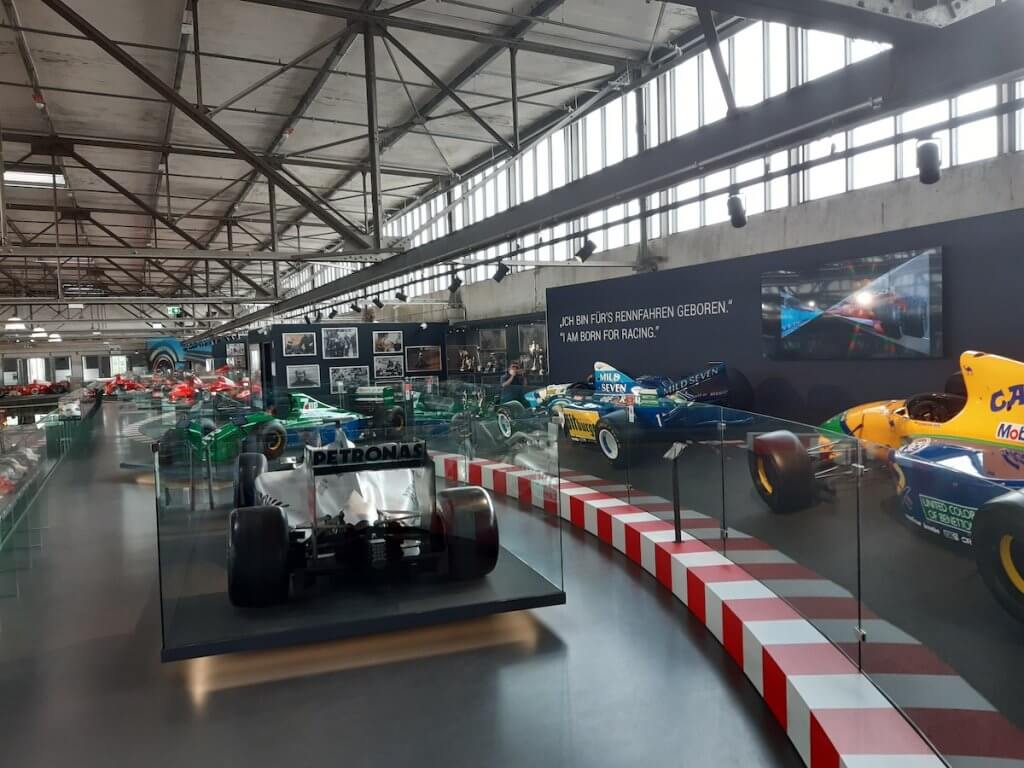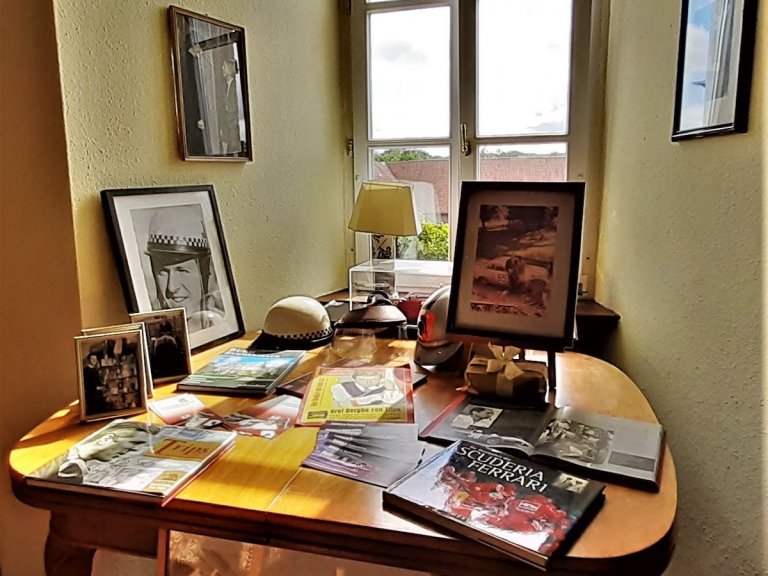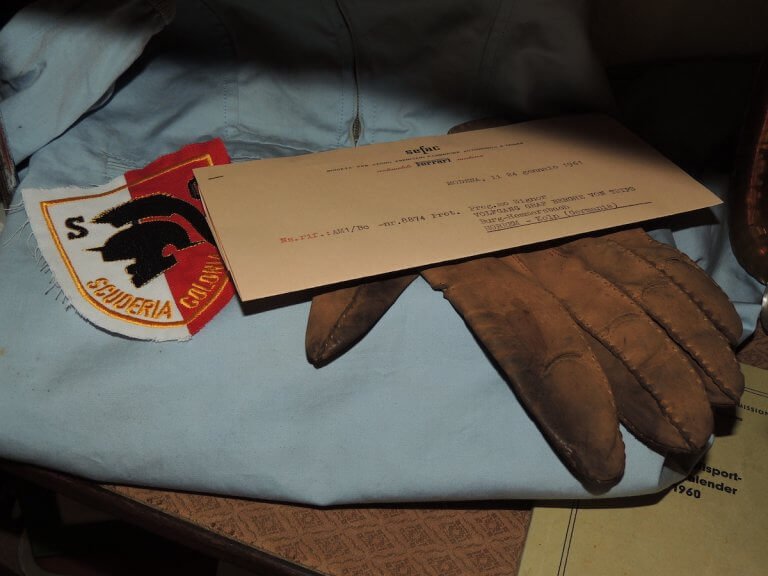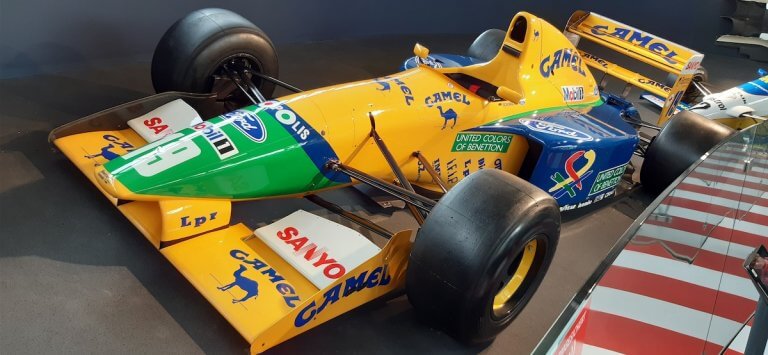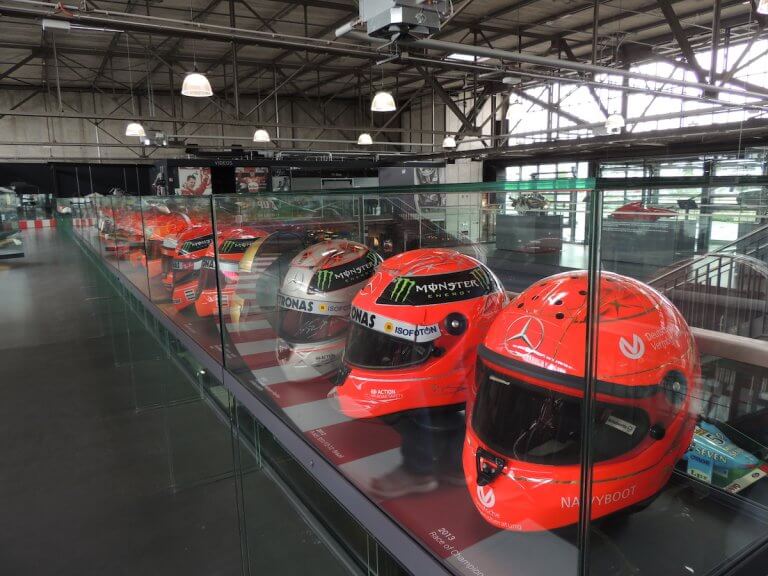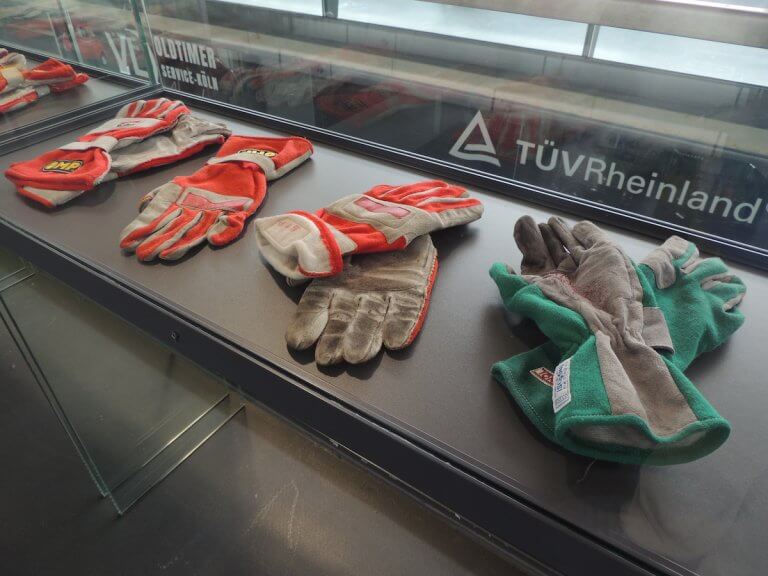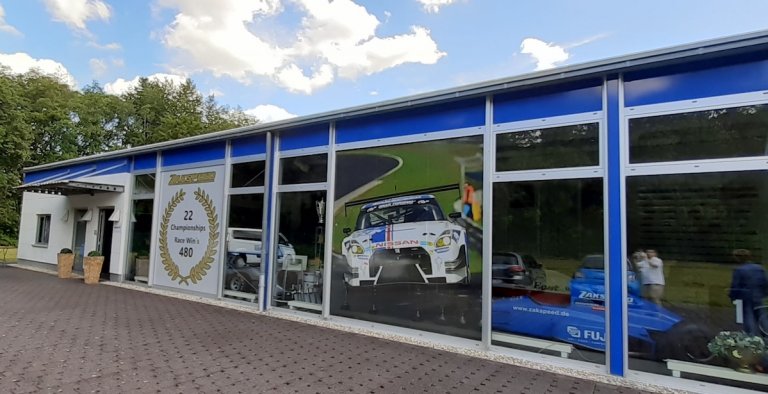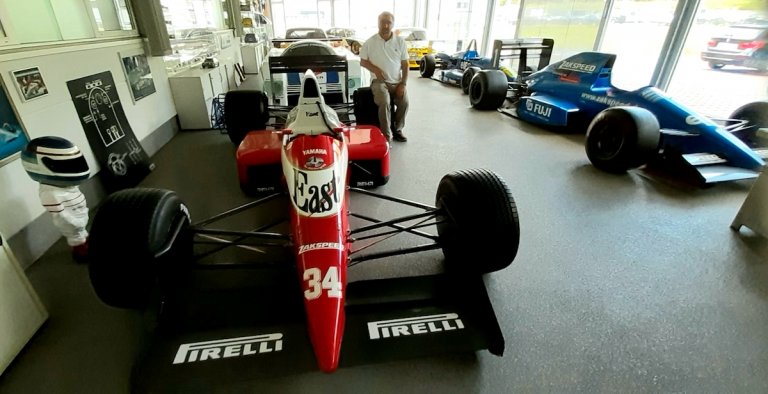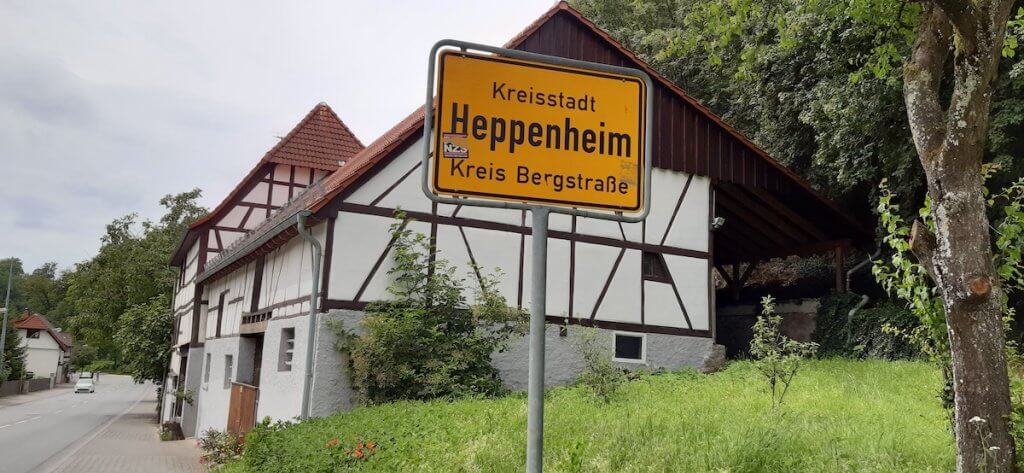
Soon after the end of the coronavirus lockdown in Europe, Károly Méhes hit the road for a tour of the most important motorsport landmarks in Germany.
Heppenheim
The birthplace of Sebastian Vettel is a peaceful little town, characterised by its pretty timber houses from the Middle Ages. On a Sunday in June, Heppenheim is quiet. Only the main square, home to the oldest gasthaus in town, is busy to some extent. Families gather to eat, observing German obedience by wearing their masks until seated at the table. I had a quiet word with the waitress about Heppenheim’s most famous son. Yes, he visits his home town two or three times a year. Fortunately, he has remained a normal person, no hype or fanfare. He also frequents this restaurant and loves everything, from pasta to steak. Later I learn that one of the oldest houses on the Grosser Markt (beside the Golden Angel hotel) was bought by Vettel last year, but it remains unrenovated. The locals are eager to learn about the four-time World Champion’s plans for the building. My tour of Heppenheim also takes me to Vettel’s former high school, which remains closed due to the coronavirus pandemic.
More information: Heppenheim location map
Where a life ended, and a legend was born
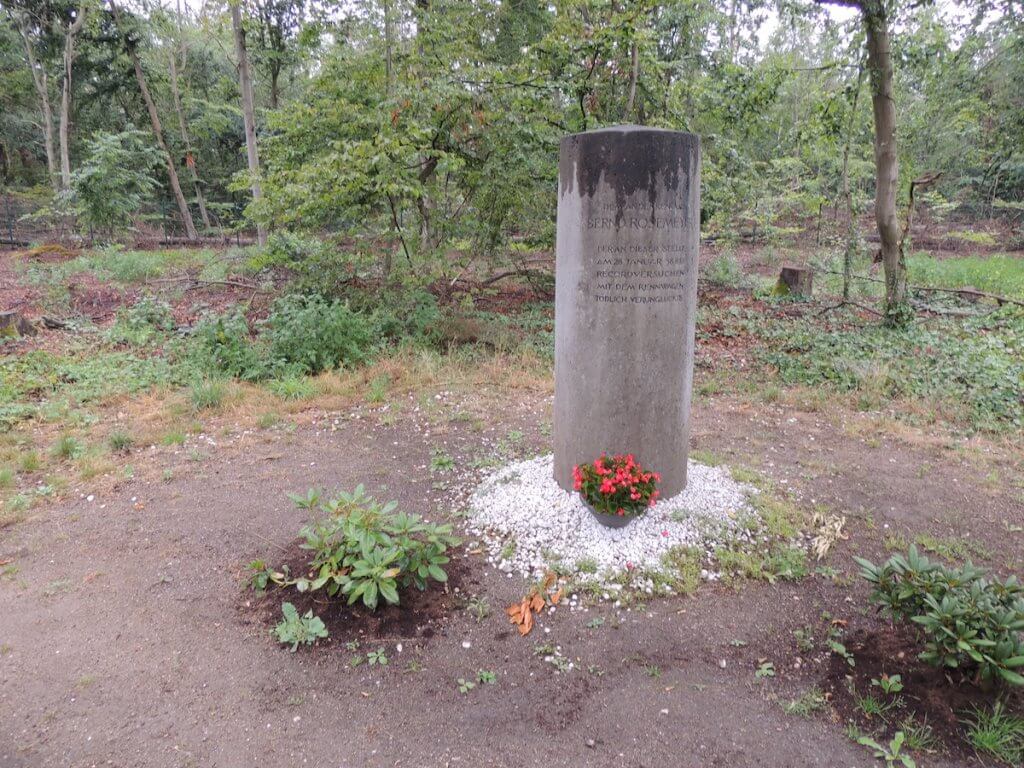
Driving towards Frankfurt on the A5 Autobahn, I make a stop at the monument to Bernd Rosemeyer. The legendary German racing ace of the pre-war era (and member of Hitler’s SS, let’s not forget) was killed at this very spot on January 28, 1938 in pursuit of a land speed record. Rosemeyer lost control of his Auto Union at more than 400km/h, possibly due to a strong gust of wind. Initial impressions of the Mörfelden rest area where the monument to Rosemeyer was erected in 2008 are not good. Cars with blacked out windows and suspicious looking bald men don’t exactly make us feel welcome. Thankfully, the monument is dignified, though you have to walk through overgrown bushes to reach it.
More information: Location Map
The home of von Trips
Several hundred kilometres to the north west in North Rhine-Westphalia, we visit the neighboring towns of Horrem and Kerpen. The former was the birthplace of Wolfgang Graf Berghe von Trips, the latter the birthplace of Michael Schumacher. After a short email correspondence ahead of my visit, the respected author and von Trips historian Jörg-Thomas Födisch had agreed to meet and give me a tour of ill-fated German’s home town. We meet at Schloss Loersfeld, where the von Trips museum found its new home after being moved from the rundown castle in Horrem. Germany’s most successful post-war racer was locked in a tight battle with Ferrari teammate Phil Hill for the 1961 Formula 1 drivers’ title when he crashed at the Italian Grand Prix and died, along with fifteen spectators.
Entering one of the rooms in the castle, you are immediately transported back to a different era of Formula 1. Mementos and records from von Trip’s career are everywhere – documents, helmets, gloves, pins, passports, trophies, even handwritten letters from Enzo Ferrari and other contemporaries. Mr Födisch is a true von Trips fan in every sense. Not only can he trace the noble family’s tree back centuries, but keeping this heritage alive is a big achievement, too. Just before his untimely death, von Trips established Scuderia Colonia, a programme to develop young racing talent in Germany that still exists today. Members of Scuderia Colonia even meet at Schloss Loersfeld from time to time. In addition to taking care of the von Trips collection, Mr Födisch and his wife also look after the family’s mausoleum and this is the final stop on our tour. When Mr Födisch opens the baronial crypt, it’s a moving moment when I think of von Trips tragic death and the impact it had on both the history of Ferrari and Formula 1 as a sport.
More information: www.automobil-rennsport-museum.de/
The Michael Schumacher Collection
We didn’t have to travel far to Motorworld in Cologne (Köln), home to the Michael Schumacher collection. We skipped Kerpen, the hometown of Schumacher, having been told there wasn’t much to see apart from the go-kart facility. But if you are a fan of the seven-time champion, Motorworld is THE place to visit. Indeed, on the first floor of a large hangar the cars of the great German racer are laid out before you; his Sauber C sportscar, the Jordan 911 with which he stormed onto the Formula 1 grid in 1991, his colourful Benettons, multiple title-winning Ferraris, and finally the silver Mercedes from his comeback. And much more of course!
His racing helmets, gloves, paddock passes and most of his trophies. It’s on a totally different scale to the intimate von Tripps collection, but Formula 1 has changed a lot since the early days of the World Championship. And Schumacher is still the most successful driver in the history of Formula 1. The building also houses a luxury car dealership and an Italian restaurant on the ground floor, which we duly sampled.
More information: Open 7 days a week, 10:00-20:00. Admission is free. https://www.privatecollection.ms/
Niederzissen, home of Zakspeed
Heading for home, I discover that our accommodation is closed to the town of Niederzissen. Never heard of it? I knew it had some Formula 1 connection, but it took me a while to realise it was the home of Zakspeed, which competed in Formula 1 in the late 1980s. The small privateer outfit run by Erich Zakowski achieved practically nothing in terms of results during its five years in Formula 1 but did find success before and after in sportscars and DTM.
We Hungarians also remember fondly when they gave 25-year old local Csaba Kesjár the opportunity to run some demonstration laps in their car after the 1987 Hungarian Grand Prix. The little Zakspeed museum contains almost all of the F1 cars they built (most of which were powered with their own turbo engine!), plus some cars from other categories. I chatted briefly with Peter Zakowski, who runs the business today on behalf of his father, who now lives on Gran Canaria and is in ill health.
More information: Location Map / Zakspeed.de
Jim Clark memorial at the Hockenheimring
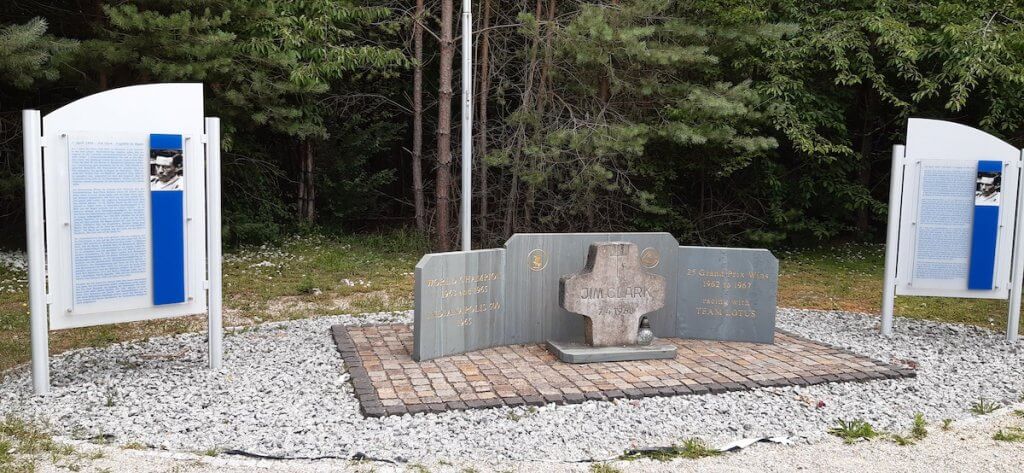
We made one final stop on our short motorsport history tour of Germany to pay our respects to one of the greatest drivers of all time, Jim Clark. The World Champion of 1963 and 1965 died at the wheel of a Lotus in a Formula 2 race at the Hockenheimring on April 7, 1968. Everything has changed since then. The track itself was radically shortened in 2002 and the place where Clark crashed into a tree and was thrown from his car is now outside of the circuit bounds. The monument to the great Scottish driver is well maintained. Some locals pass by on their bicycles. The sun beats down, in contrast to that tragic day in 1968. Another reminder on this short trip of the dangerous nature of Formula 1. Time to head for home.
More information: Location Map
